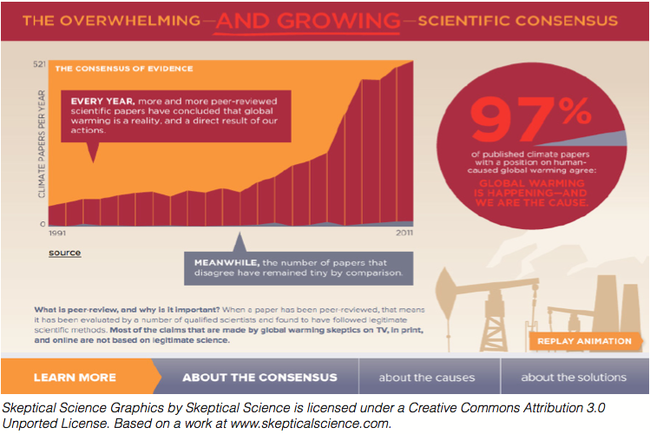Sticks and Stones
Words from an earth scientist
September 17, 2013
Casey Kennedy is an Assistant Professor of Geosciences at Northern Nevada University
Global warming – this time it's personal
You know that old saying that seeing is believing? Is there one for not just seeing, but smelling, tasting, and touching, too? For the past few weeks, smoke and ash from the Rim Fire in and around Yosemite National Park has covered wide stretches of California and Nevada in a stinking, eye-watering cloud of smoke and ash. Those of us living under this plume have been told to stay inside, close the windows, and not move around too much.
After days of cowering in the choking smoke and ash of a record-breaking wildfire, you'd have to be more than blind not to realize that there's something happening here. That something is global warming.
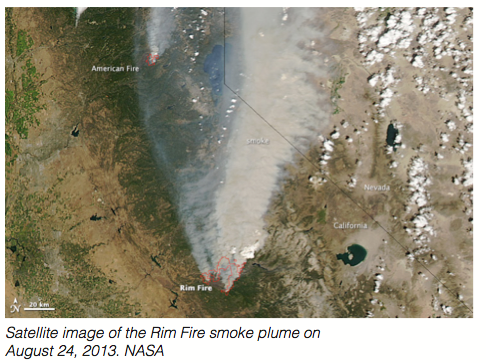
Living in a greenhouse
Light from the sun hits Earth and warms the planet. Some of that heat escapes right back into space, and some of it is caught and held by gases in the atmosphere. This heat trapping process is called the greenhouse effect, after what the windows in a greenhouse or a car do to sunlight—they let the light move in and out, but trap a lot of the heat inside.
The greenhouse effect is powerful, and for most of Earth's history, it's been a good thing. Without it, the average air temperature would be just above 0°F.
Click the image below to learn more.

But over the last three hundred years, human activity has pumped a lot of greenhouse gases into the atmosphere. The most potent of these are carbon dioxide, methane, ozone, nitrous oxide, and CFCs.
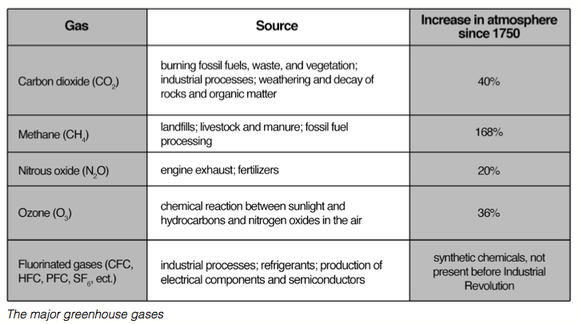
More greenhouse gases in the air mean the greenhouse effect catches more reflected heat, and the planet warms up. There is now overwhelming scientific consensus that global warming is happening—the average temperature of the Earth’s surface increased by about 1.4° F over the past century, with two thirds of it happening since 1980.
Not impressed? It's true that the difference of a couple of degrees in a local weather report barely matters. But that amount of shift in global climate will affect the lives of every person on the planet. Indeed, it already has. Consider just three of the changes that are already happening: extreme wildfires, the spread of diseases, and rising sea levels.
Where there's smoke...
Luckily for me, the winds shifted and the smoke from the Rim Fire is now blowing into someone else's neighborhood. But Yosemite still burns; over a month in, over $100 million spent fighting the fire, and 400 square miles of forest up in flames, and still it burns.
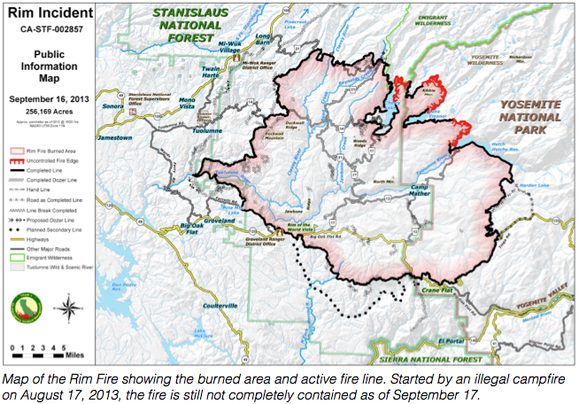
Over the last decade, devastating wildfires like this have exploded across the American west.
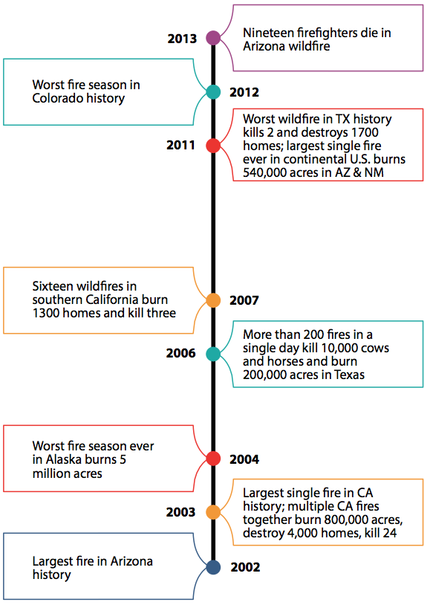
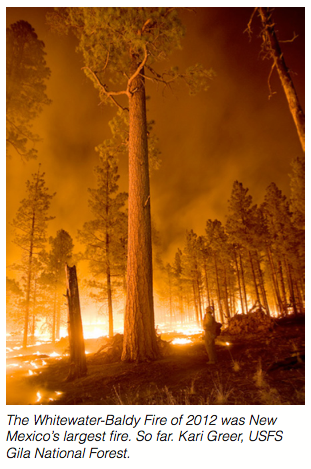
There is a clear trend developing in the western U.S. of larger and more damaging wildfires. These are spurred on by three effects of global warming that combine to make forests more likely to burn: drier winters, hotter summers, and increasingly severe, long-term droughts.
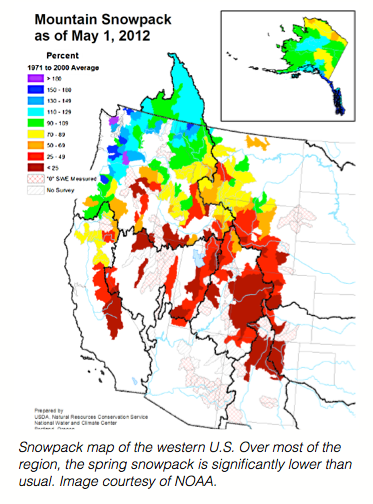
A large, slowly melting snowpack keeps a forest cool, lush, and moist well into the summer. A small snowpack that disappears by early spring leads to the build up of dry, highly flammable fuel.
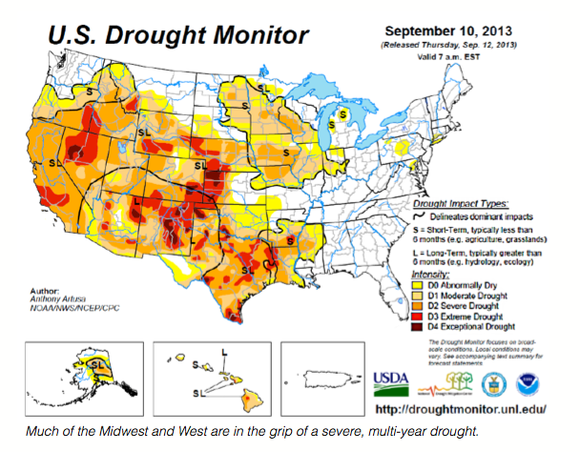
Long-lasting droughts kill vegetation and increase wildfire fuel supply, so that wildfires spread more easily and burn more intensely. Ecosystems already stressed by drought will also be less able to survive the added pressures of even small fires. Click Climate Change Fuels Western Wildfires to learn more.
They're here...
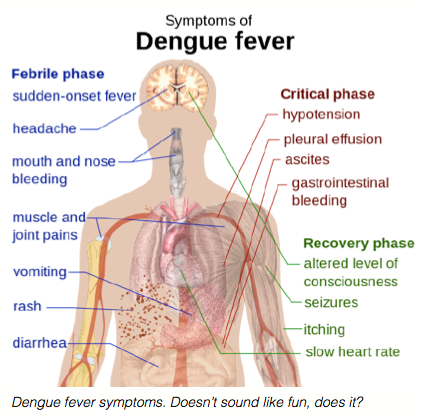
In the nineteen fifties, mosquito control efforts and public health campaigns eradicated the misery of dengue fever from the U.S. Now, sixty years later, it's back. Carried by mosquitoes, new strains of the disease have appeared in Florida, Texas, and Hawaii, and they are spreading. Sometimes called breakbone fever because of the extreme joint pain it causes, dengue also brings rashes, blistering fever, and sometimes bleeding, organ failure, and shock.
Although it's usually not fatal, there is no vaccine or cure. The World Health Organization reports that dengue fever is now the fastest spreading mosquito-borne viral disease worldwide, infecting 100 million new victims every year. A 2012 study of the illness concluded that "Dengue fever most likely will become a disease the United States must learn to live with as climate change creates opportunities for the disease to gain a foothold."
Click Climate Change and Tropical Disease to learn more.
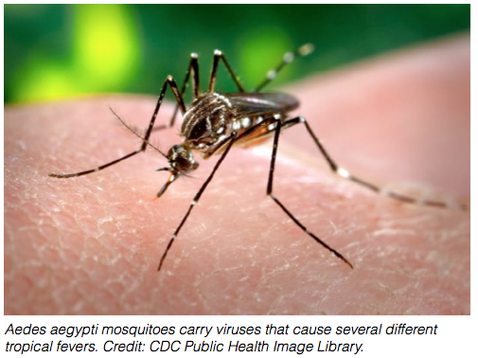
Dengue fever is not alone. Infectious disease cases are rising in step with the temperature. Milder winters and wetter springs in many parts of the warming world have led to mosquito and tick population booms. These insects can be active during more months of the year, and in some areas are now able to survive where winter freezes used to kill them off. As they have spread, so have the diseases they carry - Lyme disease, malaria, encephalitis, yellow fever, and West Nile virus. In other regions, fungal spores carried on drier, gustier summer winds are blowing once rare lung and brain diseases, like Valley Fever, into new areas. Click Dengue Fever and West Nile Virus to learn more.
We're going to need a bigger boat...
Kiribati is a small country in the equatorial Pacific, made up of 100,000 people, 32 atolls, and a single island. But not for long. Kiribati is predicted to be the first country to be lost to climate change, when rising sea level submerges the island nation. Several of the country's atolls are already disappearing beneath the waves. The rest are only one or two meters above sea level. Even areas that are still dry are becoming uninhabitable as seawater encroaches into the ground and contaminates the fresh water supply.
In 2008, Kiribati President Anote Tong asked neighboring countries to accept his people as permanent refugees, saying, "We may be beyond redemption. We may be at the point of no return, where the emissions in the atmosphere will carry on contributing to climate change, to produce a sea-level change so in time our small nation will be submerged. .... To plan for the day when you no longer have a country is indeed painful but I think we have to do that."
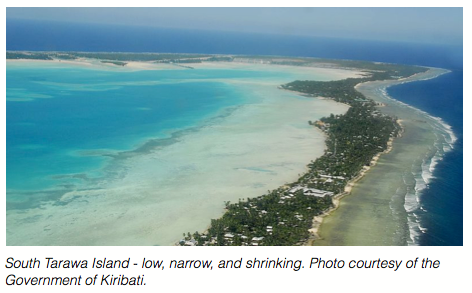
Kiribati could see the first large-scale migration of modern times driven by climate change, but it won't be the last. Sea level is on the rise worldwide, up seven to ten inches on average in just the past century. Warming air is melting mountain glaciers, sending their water into the sea. And warming oceans are simply taking up more space, because water expands as it heats up. Although sea level has gone up and down many times during the Ice Ages, the current change is substantially faster than before, and it's speeding up. Most current models predict an additional rise of at least two to six feet by 2100, enough to put some of the most populated coastal areas on earth at risk of flooding, storm surge damage, salt-water incursion, and increased erosion. Click Rising Sea Levels to learn more.

Yeah, so? What do you want me to do about it?
Global warming is here, and it's happening. We've had the data for a long time, and now we also have the evidence of our own experiences. It's making us sick and costing us money. The good news is that there are things we can do about it, besides writing indignant blog posts.
First of all, we can support government and business initiatives to limit emissions, develop non-fossil fuel technology, and increase energy efficiency. Global warming is a complex, difficult problem, and it's going to take a lot of effort, technology, and muscle to address it.
Second, we can each reduce our personal carbon footprint. A 'carbon footprint' is the amount of greenhouse gas produced by a person or an activity. It includes what we produce directly, by driving a car or turning on the stove, and also what we are indirectly responsible for, like the emissions that were given off in manufacturing and shipping the jeans and t-shirts we're wearing.
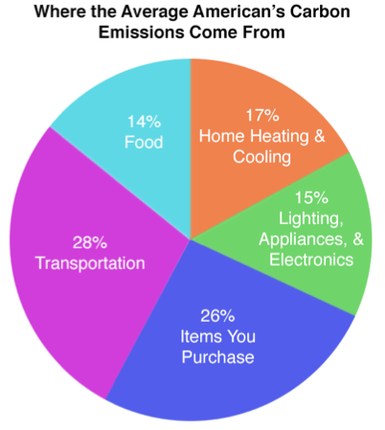
The average American produces a whopping twenty tons of CO2 every year. The good news is that means we don't need to live in a cave and eat twigs to make a difference. Here are a few ideas to shrink your carbon footprint:
Reduce CO2 and ozone emissions by walking or taking the bus just a little more often, turning your water heater down a few degrees, and switching off the lights when you leave the room.
Cut agricultural methane and soot releases by going meatless once a week. Click Slow Climate Change to learn more.
Drink water from the tap instead of a bottle. Producing just one year's worth of plastic bottles in the U.S. uses the equivalent of more than 17 million barrels of oil, and gives off more than 2.5 million tons of carbon dioxide.
Want to know more about your footprint and how to make it smaller? Head on over to the EPA website and its carbon footprint calculator. Click Carbon Footprint Calculator to learn more.
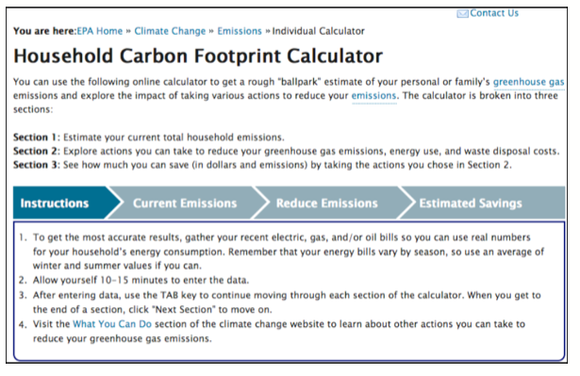
COMMENTS
Joe Peshtigo…
Come off it. The Rim Fire was started by an idiot with a campfire, not carbon dioxide!
TheSkyAintFalling…
I just read in the Daily Mail that there is 60% more ice cover in the Arctic Ocean than there was at this time last year. Kind of shoots down your whole "we're melting!" hysteria, don't it?
Sticks and Stones...
There is more ice in the Arctic this year, but only compared to last year, which was the all time record low! This year the ice recovered a little, but it was still the sixth smallest ice cap ever.
Anonymous…
I live in Cali... actually very close to the Rim Fire.... and I know what I'm talking about. You probably don't like the fact that chemtrails are responsible for the death of Stanislaus Forest. You might prefer to blame 'global warming'... but if you dig a little deeper you will find global warming is caused by chemtrails and govt weather modification. Wake Up! This is all done in the name of Agenda 21 and our Cap and Trade here in CA. Anything they can do to make global warming a reality they will do.
GoBears…
Diseases are not any worse than they used to be, but we now have 24-hour news and money-hungry bloggers that will puff up any bad thing over and over to get people to tune-in. If it scares, it sells. What's your next blog about, zombies?
Madison Wan…
Good blog! When are people going to wake up and see what's right in front of them? Sure, climate has changed before, but the here and now is what matters to us. Who cares if it was even hotter during dinosaur times?? This is bad for people!!
Missy1990…
Pffft! Another "climate change" article full of "mights" and "maybes." When do we admit this "climate change" mythology is a full-fledged religion?
Smokey...
The biggest reason for all these wildfires is 100+ years of misguided forest management. Take a walk through the sequoia groves in Yosemite, and you'll see that all the big old trees have lots of fire scars. It was natural for lightning to start lots of small fires, and they cleared the debris and undergrowth off the forest floor before it could build up. The fires wouldn't get too hot or burn up into the tree crowns because there wasn't much fuel lying around. But when Yosemite was set aside in 1860, the government decided it had to step in and put out every little blaze. Dead wood piled up and after a while the open forest was overgrown with dense stands of smaller, more flammable shrubs and trees.
Check out these two photos of the same grove of big trees:
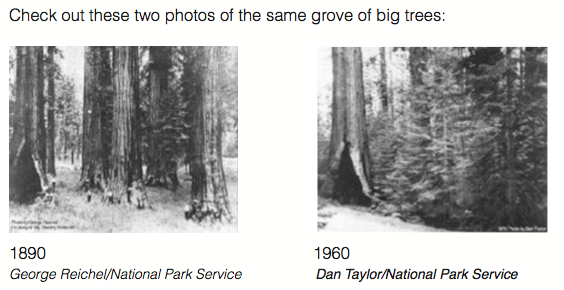
Is it any wonder that fires are bigger, hotter, and more damaging now? Look at all that extra fuel!
Give the Park Service some credit. By the 1970s they wised up and realized their management practices were creating unhealthy forests and dangerous conditions. They've tried to get things back on track by carrying out controlled burns to clear out some of the fuel load and restore the ecological balance. But the environmental lobby sues every time they try to do a little logging or put in an access road or firebreak. The tourists complain when they do any burning because they want to see pretty views, not nasty smoke. The bureaucrats back in Washington who don't know squat about the West keep cutting the USFS budget. So the forest is still a long way from back to normal. Under natural conditions, about 16,000 acres would have burned every year in Yosemite. Under "controlled" conditions, we've managed to clear out about 14,000 acres a decade. It looks to me like Mother Nature has just gotten tired of waiting.
